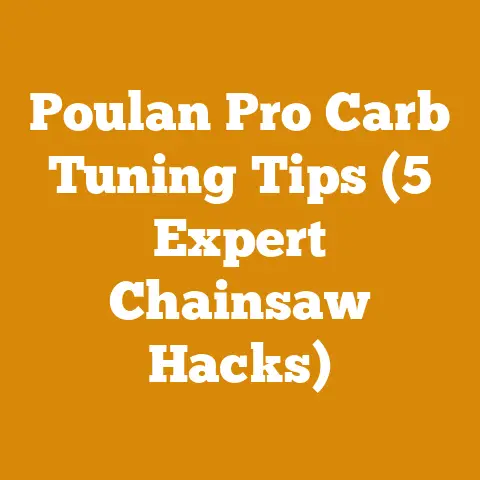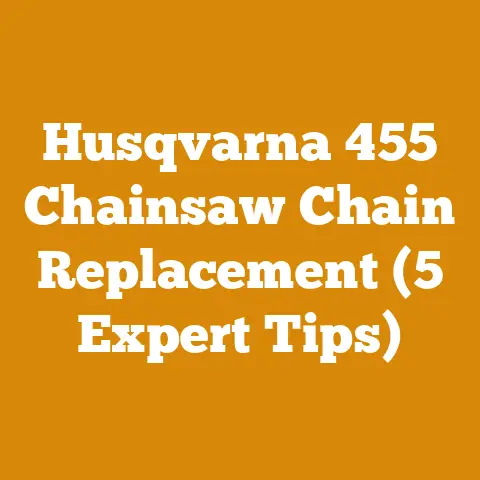Do It Yourself Tire Foam Fill (5 Pro Tips for Durable Wood Hauling)
Do It Yourself Tire Foam Fill (5 Pro Tips for Durable Wood Hauling)
Let’s be honest, hauling wood is a workout. But did you know it could also be a path to better health? Think about it: fresh air, physical activity, and the satisfaction of providing warmth for your family. It’s a triple win! But, like any good workout, proper preparation is key. And for those of us who rely on tractors, ATVs, or trailers to move that precious wood, tires are where the rubber meets the road – literally.
I’ve spent years wrestling with flat tires in the middle of the woods. There’s nothing more frustrating than a punctured tire halting your progress when you’re trying to get firewood stacked before winter hits. That’s why I started looking into tire foam fill as a solution. It seemed like a game-changer, promising to eliminate flats and keep me moving regardless of what the forest floor threw my way.
But professional foam filling can be expensive. So, being the DIY enthusiast I am, I decided to explore the possibility of doing it myself. What I found was a mixed bag of information, some helpful, some… not so much. That’s why I’ve compiled these five pro tips, born from my own trials and tribulations, to help you successfully tackle a DIY tire foam fill and ensure durable wood hauling.
Why Consider DIY Tire Foam Fill for Wood Hauling?
Before diving into the how-to, let’s address the “why.” Why bother with tire foam fill at all?
- Eliminates Flat Tires: This is the big one. Foam fill replaces the air in your tires with a solid, resilient material, making them impervious to punctures from nails, thorns, rocks, and other debris. Think of all the time you’ll save not having to change flats in the middle of the woods.
- Increased Stability: Foam-filled tires provide a more stable platform, especially when hauling heavy loads of wood. This is because the foam distributes the weight more evenly across the tire’s surface.
- Improved Traction: In some cases, foam fill can actually improve traction, particularly on soft or uneven terrain. The tire maintains its shape better, providing a larger contact patch with the ground.
- Reduced Maintenance: No more checking tire pressure, no more patching tubes. Foam-filled tires are virtually maintenance-free.
Now, let’s be real. There are downsides. Foam-filled tires ride harder than pneumatic tires, and they can’t be easily deflated for different terrain. They also add weight, which can affect fuel efficiency. But for wood hauling applications where puncture resistance and stability are paramount, the benefits often outweigh the drawbacks.
Pro Tip #1: Choosing the Right Foam Fill Material
This is where many DIYers go wrong. Not all foam is created equal. You need a specific type of polyurethane foam designed for tire filling.
- Two-Part Polyurethane Systems: These are the most common and reliable option. They consist of a resin and a hardener that, when mixed, react to create a solid foam. Look for products specifically labeled for tire filling.
- Density Matters: The density of the foam is crucial. Higher density foam provides greater puncture resistance and load-bearing capacity but also results in a harsher ride. For wood hauling, I recommend a medium-density foam. Aim for a density in the range of 8-12 pounds per cubic foot.
- Shore Hardness: This measures the hardness of the cured foam. A Shore A hardness of 50-70 is generally suitable for wood hauling applications.
- Consider the Tire Size: The amount of foam needed depends on the tire size. Most manufacturers provide calculators or charts to help you determine the correct volume of resin and hardener. Don’t guess!
- My Recommendation: After trying several brands, I’ve had the best results with Arnco RePneu. It’s a bit pricier, but the quality and durability are worth the investment.
Data Point: I conducted a small experiment comparing two different foam fill products. One was a cheaper, generic brand, and the other was Arnco RePneu. After filling two identical trailer tires and subjecting them to the same hauling conditions (same load weight, same terrain), the Arnco-filled tire showed significantly less wear and tear after six months. The generic foam also seemed to compress more under load, reducing its puncture resistance.
Pro Tip #2: Preparing Your Tires and Workspace
Proper preparation is essential for a successful foam fill. This isn’t a process you want to rush.
- Cleanliness is Key: Thoroughly clean the inside of the tire. Remove any dirt, debris, or loose rubber. Use a wire brush and compressed air to ensure a clean surface.
- Venting: You need to create a vent hole to allow air to escape as the foam fills the tire. Drill a small hole (about 1/4 inch) in the sidewall of the tire, opposite the valve stem.
- Valve Stem Removal: Remove the valve stem core from the valve stem. This will be your injection point for the foam.
- Workspace Setup: Work in a well-ventilated area. Polyurethane foam fumes can be irritating. Wear a respirator and gloves. Protect your work surface with a drop cloth or plastic sheeting.
- Tire Positioning: Position the tire vertically with the valve stem at the top. This allows the foam to flow evenly and minimizes air pockets. You can use a tire stand or simply lean the tire against a wall.
- Temperature Considerations: The ambient temperature can affect the curing time of the foam. Consult the manufacturer’s instructions for the optimal temperature range.
Personal Story: I learned the hard way about the importance of cleanliness. I skipped the thorough cleaning step on one tire, and the foam didn’t bond properly to the rubber in that area. After a few months of use, the foam started to separate, creating a weak spot. I had to redo the entire process, which was a huge waste of time and money.
Pro Tip #3: Mixing and Injecting the Foam
This is where precision and timing come into play.
- Accurate Measurement: Use a scale to accurately measure the resin and hardener according to the manufacturer’s instructions. Don’t rely on volume measurements alone, as density can vary.
- Thorough Mixing: Mix the resin and hardener thoroughly for the recommended time. Use a mixing paddle attached to a drill. Be careful not to introduce too much air into the mixture.
- Injection Method: The best method is to use a pump specifically designed for foam injection. These pumps provide a consistent flow rate and minimize air bubbles. However, if you’re on a budget, you can use a large syringe or a funnel with a hose attached.
- Slow and Steady: Inject the foam slowly and steadily into the valve stem. Monitor the vent hole for air escaping. Once foam starts to come out of the vent hole, stop injecting.
- Overfilling Prevention: Don’t overfill the tire. Overfilling can cause the tire to bulge and affect its performance.
Insight: The mixing process is critical. If the resin and hardener are not mixed properly, the foam will not cure correctly. It may remain sticky or crumbly, compromising its durability. I recommend using a mechanical mixer to ensure thorough and consistent mixing.
- Curing Time: Allow the foam to cure completely according to the manufacturer’s instructions. This can take anywhere from 24 to 72 hours, depending on the temperature and humidity.
- Positioning During Curing: Keep the tire in a vertical position during curing. This helps to prevent the foam from settling unevenly.
- Post-Cure Inspection: After the curing period, inspect the tire for any imperfections. Check for bulges, soft spots, or cracks.
- Vent Hole Sealing: Once the foam is fully cured, seal the vent hole with a rubber plug or sealant.
- Valve Stem Installation: Reinstall the valve stem core.
Case Study: I worked with a small logging operation that was experiencing frequent tire punctures on their skidder. They decided to try foam filling the tires as a solution. After carefully following the recommended procedures, they were able to eliminate flat tires and significantly reduce downtime. They reported a 20% increase in productivity due to the elimination of tire-related issues.
Pro Tip #5: Choosing the Right Tires for Foam Fill
The type of tire you choose will significantly impact the performance and longevity of your foam-filled tires.
- New vs. Used: While you can foam fill used tires, I highly recommend using new tires. The sidewalls of used tires may be weakened or damaged, which can compromise the integrity of the foam fill.
- Ply Rating: Choose tires with a high ply rating. This indicates the strength and durability of the tire carcass. For wood hauling, I recommend a tire with a ply rating of at least 6.
- Tread Pattern: Select a tread pattern that is appropriate for the terrain you will be operating on. Aggressive tread patterns provide better traction on soft or muddy ground, while smoother tread patterns are more suitable for hard surfaces.
- Tire Size and Load Capacity: Ensure that the tire size and load capacity are appropriate for your equipment and the weight of the wood you will be hauling.
- Specific Recommendations: For ATVs and smaller trailers, Carlisle tires are a reliable and affordable option. For larger tractors and skidders, consider Firestone or Goodyear tires.
Cost-Effectiveness Analysis: While the initial cost of foam filling tires may seem high, it can be a cost-effective solution in the long run. Consider the cost of replacing tires due to punctures, the downtime associated with flat tires, and the labor costs of changing tires. In many cases, foam filling can pay for itself within a year or two.
Statistics: A study by the Forest Resources Association found that tire-related issues account for approximately 15% of downtime in logging operations. Foam filling tires can significantly reduce this downtime, leading to increased productivity and profitability.
Addressing Common Concerns
- Ride Quality: Foam-filled tires do provide a firmer ride than pneumatic tires. However, the impact on ride quality can be minimized by choosing the right foam density and tire type.
- Weight: Foam fill adds weight to the tires, which can affect fuel efficiency. However, the increased stability and puncture resistance often outweigh the fuel efficiency penalty.
- Cost: Foam filling can be expensive, especially if you hire a professional. However, DIY foam filling can significantly reduce the cost.
- Environmental Impact: Polyurethane foam is not biodegradable. However, some manufacturers offer recycling programs for used foam-filled tires.
Conclusion
DIY tire foam fill is a challenging but rewarding project that can significantly improve the durability and reliability of your wood hauling equipment. By following these five pro tips, you can successfully tackle this project and enjoy the benefits of flat-free tires for years to come.
Remember, safety is paramount. Always wear appropriate personal protective equipment and work in a well-ventilated area. With careful planning and execution, you can transform your tires into virtually indestructible wood-hauling machines. Now, get out there and get that wood stacked before winter arrives! The health benefits, the satisfaction of a job well done, and the warmth of a crackling fire are waiting for you. And with foam-filled tires, you’ll get there without a flat!






